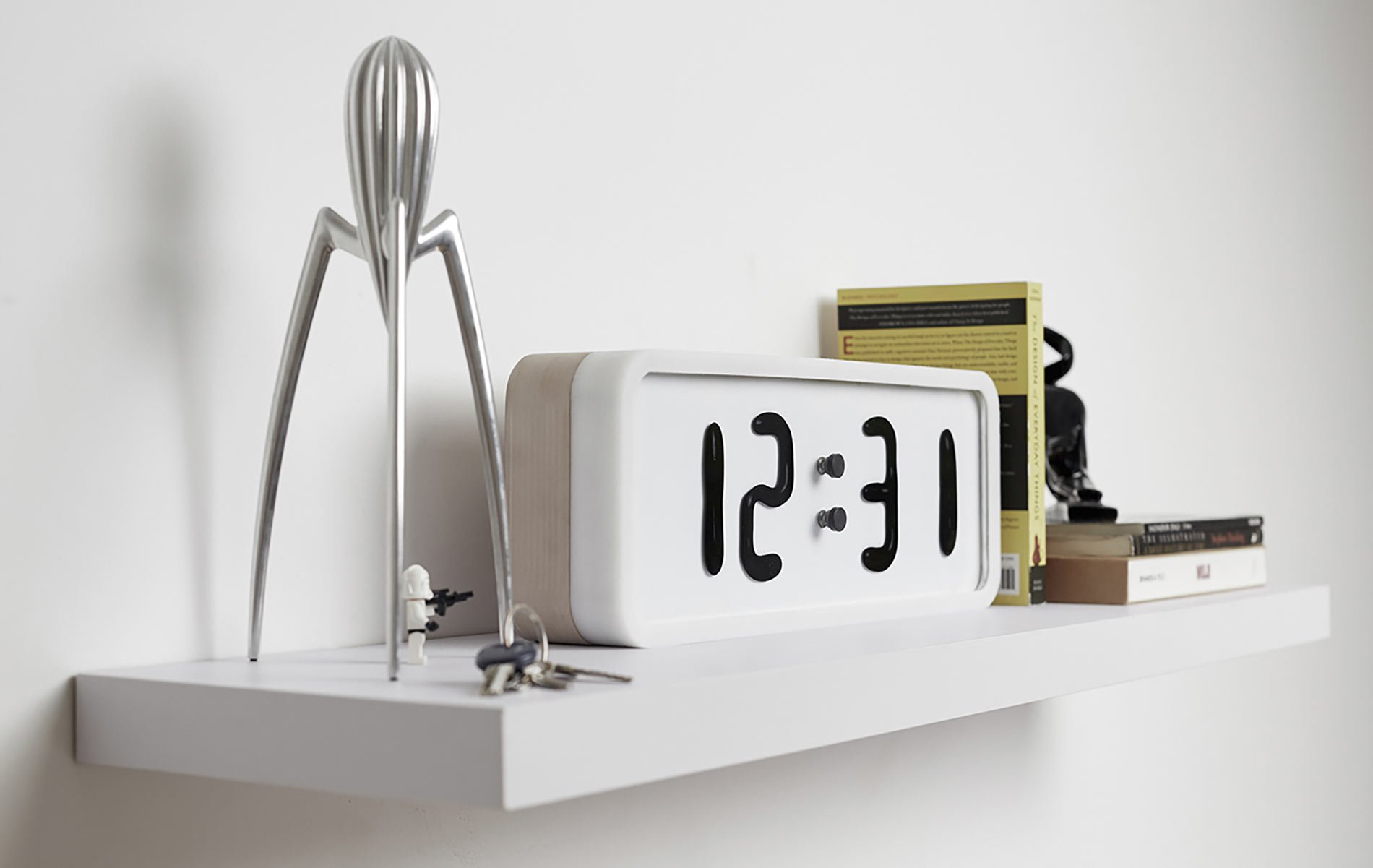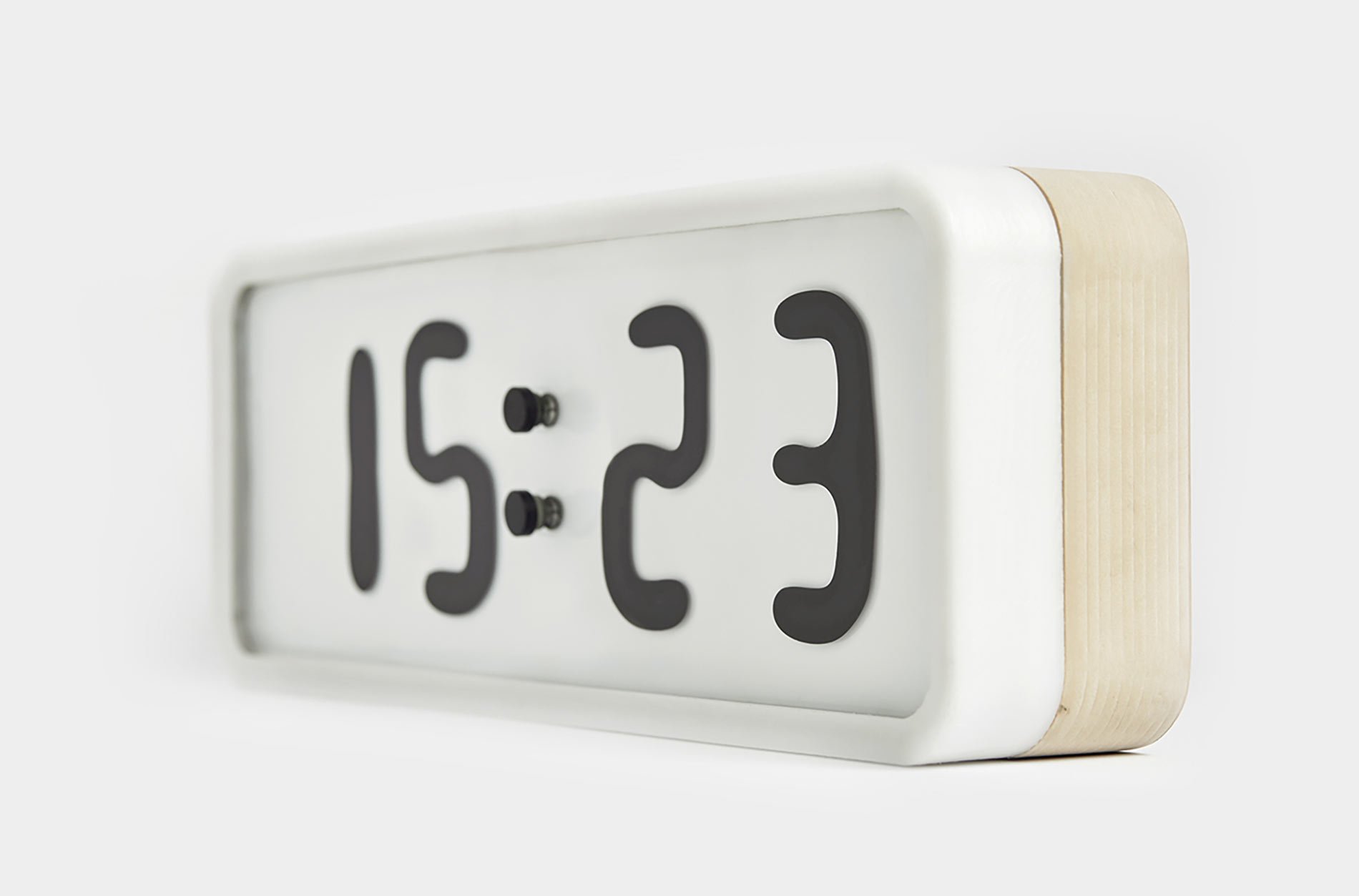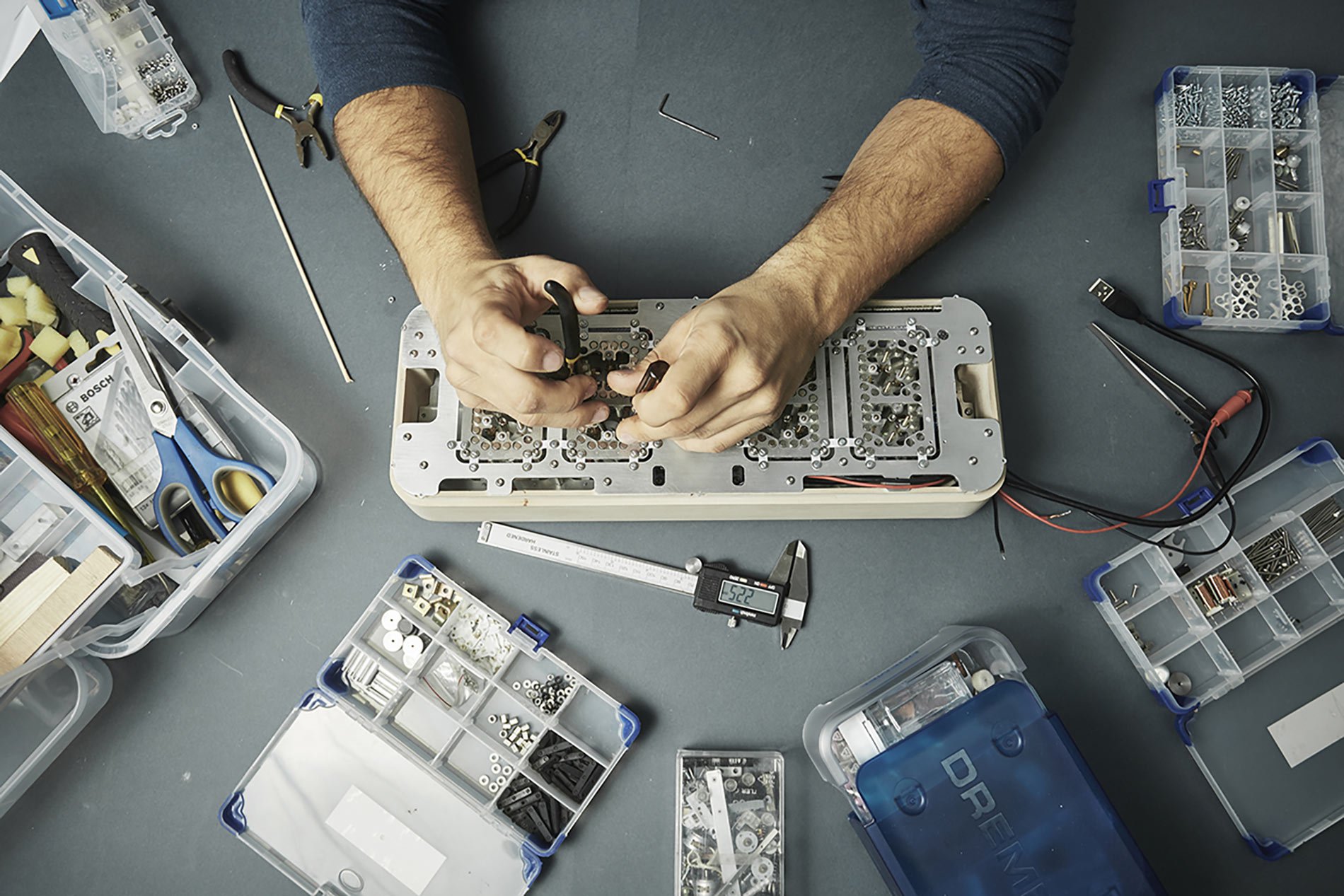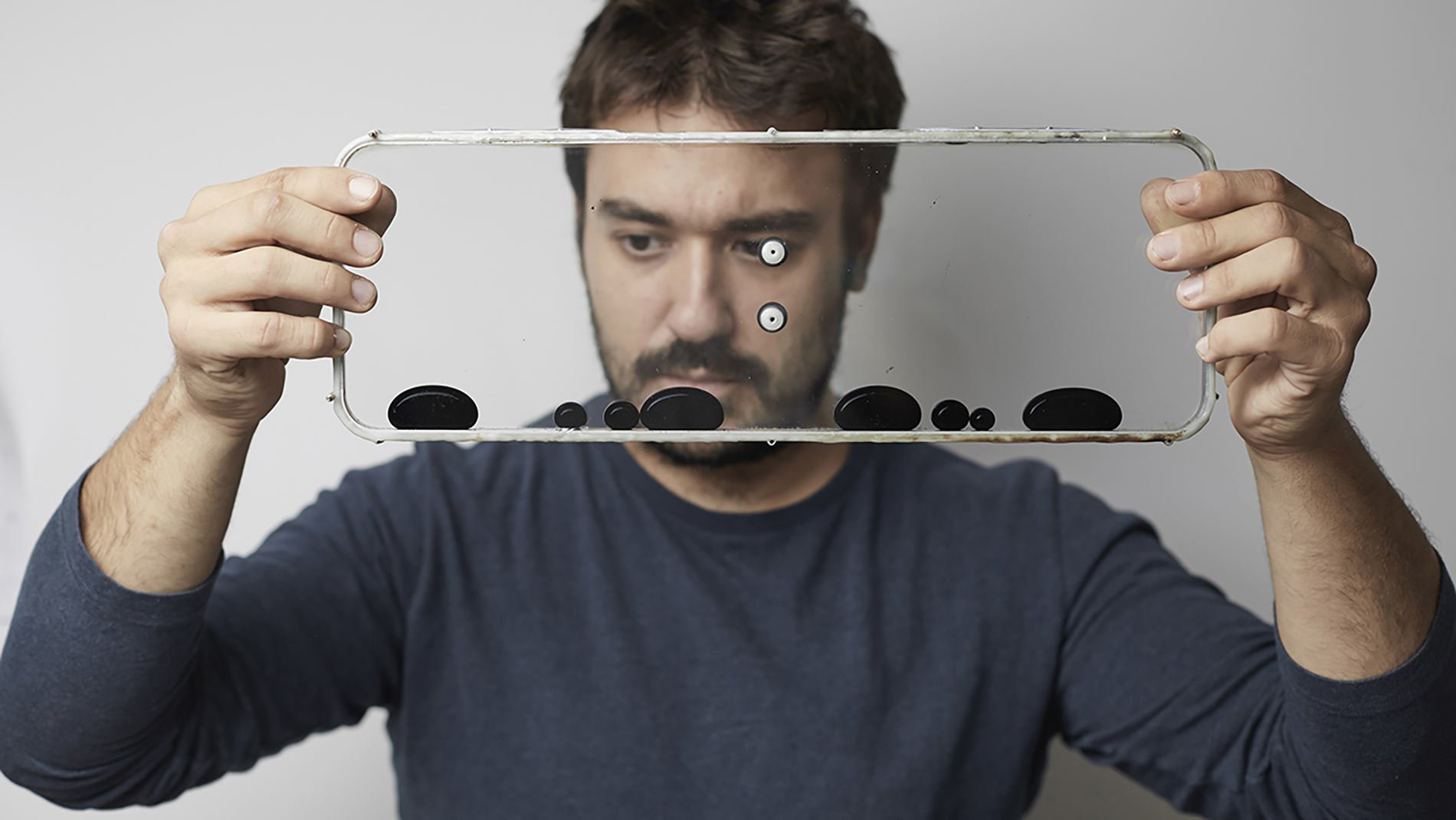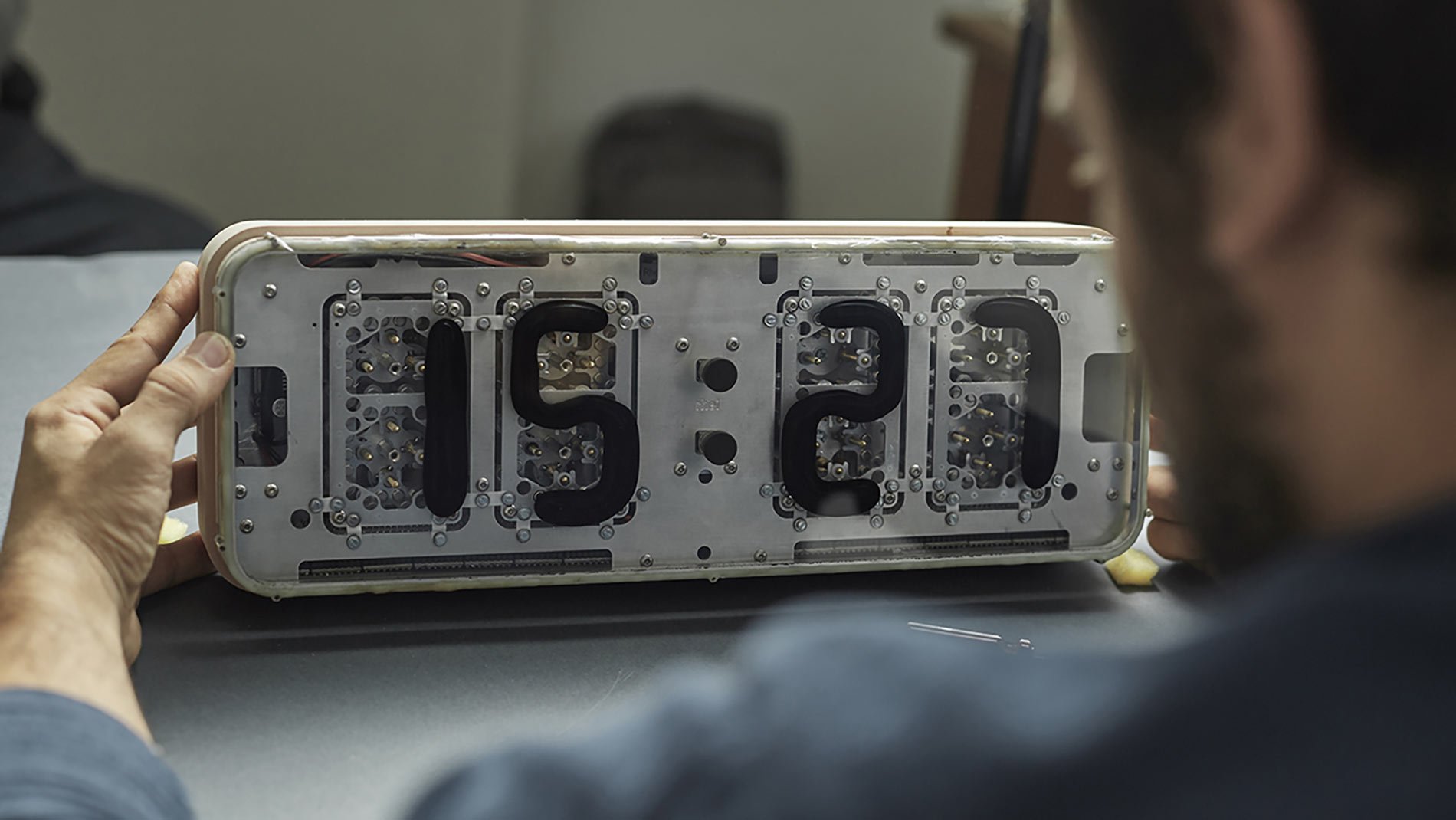The dancing numbers in Rhei, Damjan Stankovic’s electromechanical clock, appears in flux on the cusp of a subtle yet constant transfiguration, giving physical substance to the fluidity felt by an object ever-changing through spatially dynamic time. Executed in collaboration with Marko Pavlovic and a supportive team, the form of Stankovic’s Rhei appears to be inspired by Minimalist digital clock displays, and the psychedelic suspended orbs found in Astro lava lamps.
Inspired by Minimalist digital clock displays, and the psychedelic suspended orbs found in Astro lava lamps.
Void of ornamentation and color, apart from the exposed natural wood backing, the aesthetic focus and creative novelty of Rhei is in its fluid time display. The curved number display is further accentuated by the smoothed edges of its well-crafted container, and similarly contrasted being juxtaposed directly against the boldly protruding colon hour and minute separator. The practical expression of this kinetic sculpture contrasts mechanical horology with the sensory notion of time twofold, first as the dark numbered forms float, constantly changing within their whitened void container, and secondly as the viewer watches the object’s mechanical performance move in organic resonance.
Unlike lava lamps, which generally suspend paraffin wax and tetra-chloride in water, the precision to form and electromechanical properties of Rhei that allow the liquid to display time, suggests the use of ferrofluid, a colloidal liquid containing nano-scale ferromagnetic particles that become highly magnetized and malleable in the presence of a magnetic field. An interesting amalgamation of technology, practicality, and metaphysical thought, Stankovic’s Rhei is the perfect agent for display.



